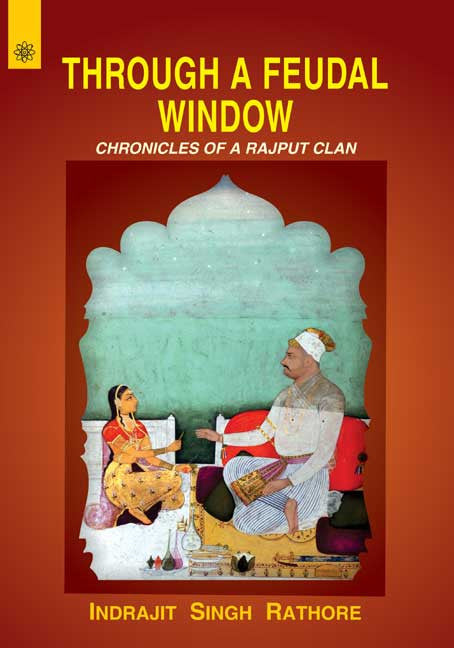Through a Feudal Window: Chronicles of a Rajput Clan
![]() 100% Genuine New Books
100% Genuine New Books
![]() Fast Shipping with Tracking Number
Fast Shipping with Tracking Number
Secure Payments via UPI, Cards & Wallets
![]() Trusted Support & Easy Returns
Trusted Support & Easy Returns
Through a Feudal Window: Chronicles of a Rajput Clan - Hardcover is backordered and will ship as soon as it is back in stock.
ISBN : 9788178224664, 8178224666
Year of Publication : 2014
Edition : 1st
No. of Pages : 163
Language : English
Condition : New
Publisher: Motilal Banarsidass Publishing House
Free shipping on orders over Rs. 249
Free shipping on orders over Rs. 249
We offer free shipping on orders above Rs. 249 in India. For orders below this threshold, a nominal shipping fee may apply, which will be clearly indicated during the checkout process.
How long will it take to receive my order?
How long will it take to receive my order?
The delivery time varies depending on your location. Generally, orders are processed and shipped within 1-3 business days. Once shipped, you can track and expect your order to arrive within 3-7 business days (the duration may vary depending on your location). For more information, please refer to our shipping policy.
Chat with a Real Person
Chat with a Real Person
WhatsApp chat is dedicated to assisting with after-sales queries regarding delivery, returns, and payments. Click below to initiate chat with us on WhatsApp:
[Bookstaa WhatsApp Chat].
For all other inquiries, please visit our customer support page or email us at support@bookstaa.com.
Couldn't load pickup availability
Description
Description
This is the story of every Rajput feudal family in Rajasthan through Indian History.
This is a tale of extraordinary survival of a clan over a millennium. The chronicles of the
Mertia Jagmalots trace their origins to their progenitor Rao Duda of Merta and through him to
the Rathore clan of Rajputs. The martial Rajputs, according to many historians, descended from the Scythians who ruled large tracts of northern India in the early centuries of the first millennium A.D.
While it is true that we are all in a sense survivors down from Adam, but to be able to trace a
lineage over six hundred years on the basis of historical records puts such survivors in a
remarkable category of their own. Tracing the history of one family in the sub-clan assumes
historical significance as a study of a microcosm representative of numerous feudatory families
across Rajasthan which have braved the vicissitudes of history to survive meaningfully to the present day. The story of one family then becomes the story of every such family with minor variations.
We see how they faced one challenge after another with the changing dynasties and empires
in the region and at the central seat of power. We observe how they withstood the hegemonistic
ambitions of the regional super powers and the overlordship of the Delhi Emperors expressed through their Governors at Ajmer. The manner in which they succeeded in fending off the bigger fish in their neighbourhood, forever seeking to swallow them or learnt to deal tactfully with the
whales from Delhi, emerging remarkably intact into the present times, constitutes the theme of this book.
About the Publisher

Motilal Banarsidass Publishing House (MLBD)
Motilal Banarsidass Publishing House, popularly known as MLBD, is one of the oldest and most prestigious publishing houses in India, established in 1903.
With over a century of legacy, MLBD has been at the forefront of publishing scholarly works in the fields of Indology, Sanskrit, philosophy, religion, spirituality, yoga, Buddhism, and Jainism.
Renowned for its authenticity and academic rigour, MLBD's books are trusted by researchers, scholars, and readers across the globe.
With more than 5,000 titles in circulation, MLBD continues to uphold its commitment to preserving and promoting India’s rich cultural and philosophical heritage.
Bookstaa is an authorized distributor of MLBD books, ensuring 100% genuine and original publications for our readers.

